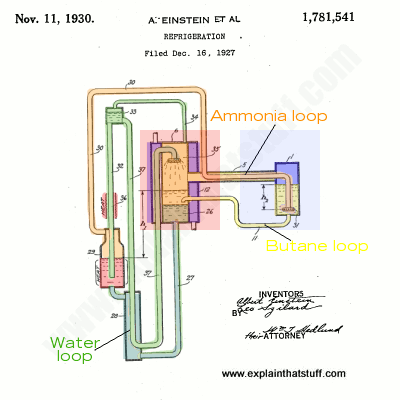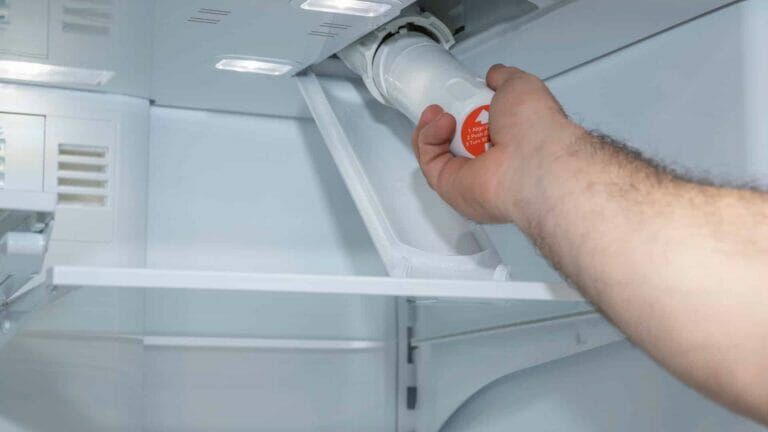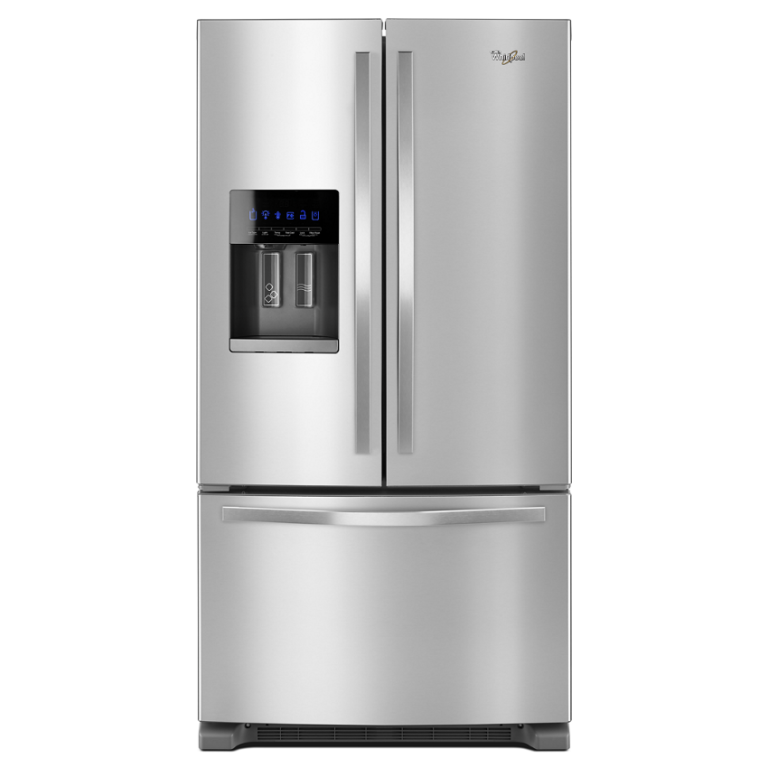
Introducing the Science Behind a Double Door Fridge’s Cooling System
Welcome to the fascinating world of double door fridges and their cool, innovative cooling systems! Today, we’re going to dive into the science behind how these fridges keep your food fresh and chilled. So, get ready to explore the inner workings of these cool appliances!
Discover the Secrets Behind Optimum Cooling Efficiency
Ever wondered how the fridge manages to maintain the perfect temperature to keep your ice cream frozen and your veggies crisp? It’s all about the intricate engineering that goes into the cooling system. We’ll uncover the secrets that make it possible for your fridge to work its cooling magic.
Unleashing the Power of Refrigeration Technology
Did you know that the cooling in your fridge is made possible by a magical process called refrigeration? Through this incredible technology, fridges are able to remove heat from the inside, keeping your groceries fresh and delicious. Let’s embark on this journey of scientific discovery and unravel the mysteries of the double door fridge’s cooling system!
Get ready to be amazed as we explore the science, engineering, and technology that brings coolness to your kitchen!

The Science Behind A Double Door Fridge’s Cooling System
Welcome to the world of refrigeration! In this article, we will delve into the fascinating science behind the cooling system of a double door fridge. From the basic principles of thermodynamics to the intricate mechanisms involved in maintaining the optimum temperature, we will explore how this essential appliance works to keep your perishable items fresh. So, let’s dive in and uncover the secrets behind the cooling magic!
How Does a Double Door Fridge Work?
Understanding the inner workings of a double door fridge can be mind-boggling, but fear not! We’ll break down the process into simple terms. At its core, a double door fridge operates on the principles of heat transfer and insulation. The main components responsible for its cooling abilities are the compressor, condenser, evaporator, and expansion valve.
The compressor plays a crucial role by compressing the refrigerant gas, increasing its temperature and pressure. As the high-pressure gas flows into the condenser, it loses heat and transforms into a high-pressure liquid. This liquid refrigerant then moves into the evaporator, where it expands rapidly, dropping its pressure and temperature. As a result, the surrounding air inside the fridge cools down, creating the chilled environment we all love.
To maintain the desired temperature, the expansion valve controls the flow of refrigerant into the evaporator. Throughout this cycle, the fridge’s insulation prevents heat from entering the compartments, helping to maintain a constant temperature for your food and beverages.
The Role of Thermodynamics in Fridge Cooling
Thermodynamics is the branch of physics that deals with the conversion of heat into other forms of energy. Within a double door fridge, thermodynamics is at play to ensure optimal cooling efficiency. The fundamental principle involved is the transfer of heat from a warmer area (inside the fridge) to a cooler area (the room).
As the compressor compresses the refrigerant gas, its temperature rises, making it hotter than the surrounding environment. This heat is then expelled through the condenser coils to the outside, aided by a fan. The refrigerant, now cooler, moves into the evaporator, where it rapidly expands and absorbs heat from the fridge’s compartments. The process repeats, maintaining a consistent cool temperature inside the fridge.
Thanks to the laws of thermodynamics, a double door fridge’s cooling system can efficiently remove heat from its interior, keeping your food fresh and minimizing energy consumption.
The Importance of Insulation
When it comes to refrigeration, insulation is an unsung hero. Without proper insulation, the cooling system would be rendered ineffective, as heat from the external environment would seep into the fridge, sabotaging its cooling abilities. Double door fridges are equipped with high-quality insulation materials, such as polyurethane foam, to create a barrier between the interior and exterior.
The insulating material helps trap the cool air inside the fridge and prevents warm air from infiltrating. This significantly reduces the workload on the cooling system, promoting energy efficiency and ensuring a stable temperature for your groceries. So, the next time you grab a cold drink from your double door fridge, remember to thank its insulation for keeping it refreshingly cool!
Energy Efficiency and Environmental Impact
As technology advances, energy efficiency has become a top priority in the design of double door fridges. Manufacturers strive to minimize the environmental impact while maximizing cooling performance. Newer models often feature energy-efficient compressors, improved insulation, and advanced temperature control systems.
Energy efficiency not only helps reduce electricity bills but also lowers the carbon footprint associated with refrigeration. By opting for a double door fridge with a high energy star rating, you can contribute to a more sustainable future while enjoying the benefits of a reliable cooling system.
The Future of Refrigeration: Innovations and Trends
The world of refrigeration continues to evolve, with ongoing research and development focused on improving cooling technologies. Some exciting innovations on the horizon include smart fridges with built-in cameras for inventory management, adjustable temperature zones for different food types, and even voice-controlled interfaces.
Additionally, there is a growing emphasis on eco-friendly refrigerants that have minimal impact on the environment. This shift away from traditional refrigerants like CFCs and HCFCs is aimed at reducing greenhouse gas emissions and addressing the environmental concerns associated with conventional refrigeration methods.
As we move towards a more sustainable future, the science behind double door fridge cooling systems will continue to adapt and evolve, offering not only efficient cooling but also reduced environmental impact and enhanced user experience.
The Science Behind A Double Door Fridge’s Cooling System
In this article, we will explore how a double door fridge’s cooling system works and the science behind it.
- The cooling system in a double door fridge uses a compressor to circulate refrigerant, which absorbs heat from the inside of the fridge and releases it outside.
- By controlling the flow of the refrigerant, the fridge can maintain a consistent temperature for storing food.
- The cooling system also includes a condenser and an evaporator, which work in tandem to remove heat and cool the interior of the fridge.
- A fan helps distribute the cold air throughout the fridge, ensuring that all areas are evenly cooled.
- The double door design allows for separate compartments for fresh food and frozen food, each with its own cooling system and temperature controls.
Frequently Asked Questions
Welcome to our FAQ section where we unravel the science behind the cooling system of a double door fridge. Find answers to your most burning questions here!
1. How does a double door fridge cool its contents?
A double door fridge cools its contents using a process known as vapor compression refrigeration. This system consists of several key components – a compressor, condenser, expansion valve, and evaporator. The compressor plays a crucial role by pressurizing the refrigerant gas, which increases its temperature. The hot, high-pressure gas then flows into the condenser, where it loses heat to the surroundings and becomes a high-pressure liquid. This liquid then passes through the expansion valve, which causes it to expand rapidly, resulting in a drop in temperature.
The now-cold refrigerant liquid enters the evaporator, which is located inside the fridge. As the warm air from inside the fridge comes into contact with the cold evaporator coils, heat is transferred from the air to the refrigerant. This causes the refrigerant to evaporate, absorbing heat from the fridge’s interior. The cold refrigerant gas then returns to the compressor, and the cycle continues, providing continuous cooling for the contents of the double door fridge.
2. How does the double door fridge maintain different temperatures for the freezer and refrigerator sections?
A double door fridge maintains different temperatures for the freezer and refrigerator sections by utilizing separate evaporators and cooling circuits. Each section has its own evaporator coil and fan system. The freezer’s evaporator coil is located in the freezer compartment, while the refrigerator’s evaporator coil is located in the refrigerator section.
The separate cooling circuits work independently to maintain their respective temperature zones. The compressor of the fridge sends refrigerant gas to both evaporator coils, but the flow of refrigerant is controlled by valves. The valve in the freezer circuit allows a greater flow of refrigerant, which results in lower temperature levels. Meanwhile, the valve in the refrigerator circuit restricts the flow of refrigerant, enabling a slightly higher temperature for the refrigerator section.
3. How does a double door fridge prevent frost buildup?
To prevent frost buildup in a double door fridge, a feature called an auto-defrost system is employed. This system uses a defrost timer or control board to initiate a defrost cycle at regular intervals. When the defrost cycle begins, the compressor shuts off, and a heating element located near the evaporator coils is activated. The heat generated by the element melts any ice or frost that has accumulated on the evaporator coils.
In addition to the heating element, an auto-defrost system also includes a drain system. As the frost melts, it turns into water, which then flows into a drain pan located at the bottom of the fridge. From there, the water either evaporates or is drained outside the fridge, ensuring that no water accumulates inside and causing any inconvenience.
4. Can I adjust the temperature settings of a double door fridge?
Yes, most double door fridges allow users to adjust the temperature settings for both the freezer and refrigerator sections. Temperature control is typically achieved through a thermostat located inside the fridge. By turning the thermostat dial or selecting the desired temperature on a digital panel, you can set the temperature to your preference.
It’s important to note that it may take some time for the adjusted temperature to stabilize and reach the desired level. Therefore, it’s recommended to wait a few hours after making temperature adjustments before checking if the fridge has reached the desired temperature.
5. How can I maximize the cooling efficiency of my double door fridge?
To maximize the cooling efficiency of your double door fridge, there are several steps you can take. First, ensure that the fridge is not placed near a heat source such as direct sunlight, an oven, or a radiator. Excessive heat can make the cooling system work harder, leading to decreased efficiency.
Next, make sure that the fridge’s door seals are in good condition and are sealing tightly. Loose or damaged seals can result in air leakage, causing the fridge to work harder to maintain the desired temperature. Regularly cleaning the coils located at the back or underneath the fridge is also crucial to promote efficient heat transfer.
Summary
So, to sum it up, a double door fridge’s cooling system works like this:
– The compressor squeezes the refrigerant gas making it super hot and high pressure.
– The hot gas flows to the condenser coils where it loses heat to the surroundings.
– The liquid refrigerant then passes through the expansion valve, becoming colder.
– As the cold refrigerant flows through the evaporator coils, it absorbs heat from inside the fridge.
– Finally, the now warm refrigerant returns to the compressor to start the process again.
In this way, the double door fridge keeps your food fresh and drinks cool!



